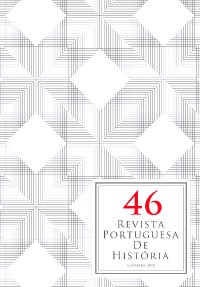Please use this identifier to cite or link to this item:
https://hdl.handle.net/10316.2/38185| Title: | Circulação de instrumentos musicais no espaço português quinhentista | Other Titles: | Circulation of musical instruments in portuguese sixteenth century overseas | Authors: | Monteiro, Isabel | Keywords: | Musical instruments;Recorders;Shawms;Viols;Trumpets;Instrumentos musicais;Flautas;Charamelas;Violas;Trombetas | Issue Date: | 2015 | Publisher: | Imprensa da Universidade de Coimbra | Abstract: | No dealbar da Idade Moderna o porto
de Lisboa – resguardado pela barra do Tejo,
singular pelas suas águas profundas – abriu
as portas da cidade ao mundo conhecido
e por conhecer, facultando segurança aos
enormes navios transoceânicos aí fundeados
e facilitando cargas e descargas de pessoas e
bens, de e para África, Ásia e Novo Mundo.
Daqui partiam trombetas e charamelas
no séquito de Governadores e Vice-reis,
flautas e sacabuxas destinadas à missionação,
gaitas e outros instrumentos para recreação
a bordo; órgãos e sinos integravam ricas
ofertas diplomáticas para soberanos de outros
continentes, numa política de expansão da fé
cristã há muito iniciada. Intencionalmente ou não, Portugal difundia, juntamente com
os instrumentos musicais, modelos culturais
e artísticos de matriz europeia que iriam
insinuar-se em novas geografias, entre «gente
afastada tantos intervalos de mar e terra».
Daqui partiam instrumentos e músicos para
o Brasil, Angola e Índia, transitando de Goa
para Ormuz, Etiópia e Japão. Este artigo visa
dar uma panorâmica das práticas musicais
introduzidas nesses territórios, destacando
de forma não exaustiva alguns dos principais
instrumentos aí utilizados, bem como o modo
como se foram adaptando às novas realidades
encontradas e vividas pelos portugueses. In early modern era Lisbon had its doors opened to the known and unknown world, its harbour providing the overseas ships secure loading and unloading, to people and goods from and to Africa, Asia and the New World. From here departed trumpets and shawms accompanying Governors and Viceroys, recorders and sackbuts to the missionaries’ activities, and bagpipes to recreation on board; organs and bells took part in diplomatic offers to other continents sovereigns, within a political strategy of spreading Christian faith, long ago started. Thus Portugal spread, intentionally or not, together with musical instruments, cultural and artistic European models which would little by little settle in new territories. Instruments and musicians left from here to Brazil, Angola and India, being sent from Goa to Ormuz, Ethiopia and Japan. This paper aims to overview the musical praxis introduced in those territories, underlining some of the most common instruments in use there, as well as the way it was being adapted to the new realities found by the Portuguese. |
URI: | https://hdl.handle.net/10316.2/38185 | ISSN: | 0870-4147 2183-3796 (digital) |
DOI: | 10.14195/0870-4147_46_6 | Rights: | open access |
| Appears in Collections: | Revista Portuguesa de História |
Files in This Item:
| File | Description | Size | Format | |
|---|---|---|---|---|
| circulacao_de_instrumentos_musicais.pdf | 2.34 MB | Adobe PDF |  |
Items in DSpace are protected by copyright, with all rights reserved, unless otherwise indicated.
